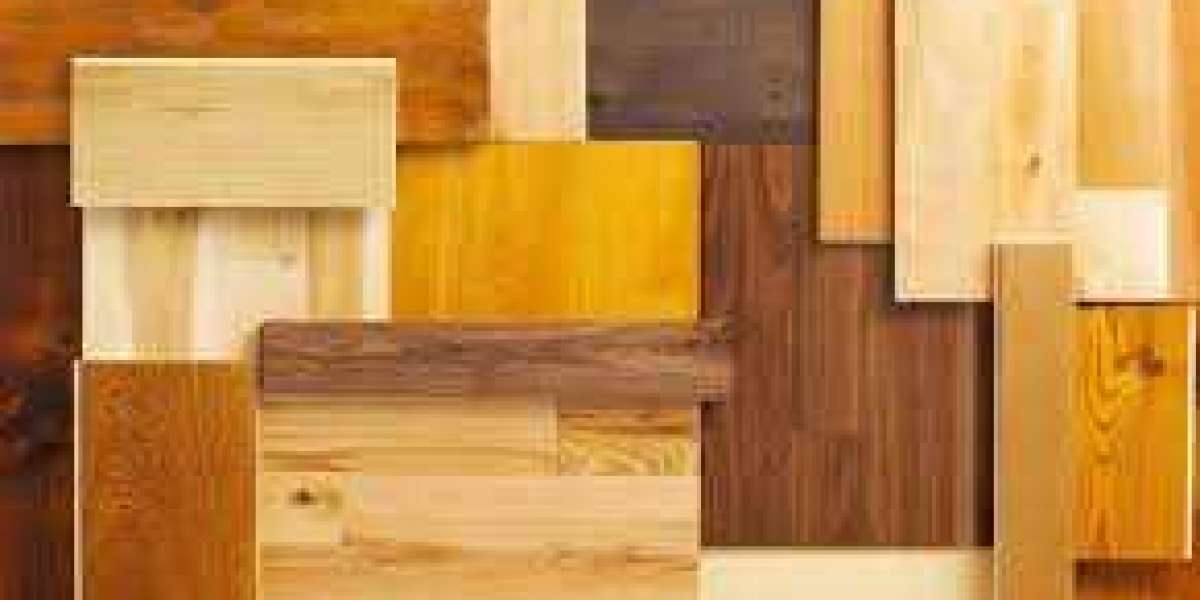Are you embarking on a woodworking project and finding yourself lost in the labyrinth of plywood options? With so many choices out there, it's easy to feel overwhelmed. But fear not! We're here to shed some light on the topic and help you make an informed decision. In today's blog post, we'll be unraveling the mystery behind WBP plywood and how it stacks up against other types in terms of quality, durability, and suitability for different projects. So grab your coffee, put on your thinking cap, and let's dive right into this fascinating world of wood!
Introduction to WBP Plywood What is it and Why is it Used?
WBP (Water Boil Proof) plywood is a type of plywood that is specially designed to withstand exposure to moisture and water without delamination or warping. It is commonly used in applications where the wood will be exposed to high levels of humidity or direct contact with water, such as in marine construction, outdoor furniture, and kitchen cabinets.
What sets WBP plywood apart from other types of plywood is its unique construction process. One of the most important steps in the production of WBP plywood is the use of waterproof adhesives. This adhesive is specially formulated to resist water penetration and maintain strong bonds between layers even when exposed to moisture.
Additionally, WBP plywood goes through a special boiling process during manufacturing which helps to seal the gaps between plies and further enhance its water resistance properties. This process also increases the overall strength and durability of the plywood, making it suitable for heavy-duty applications.
Due to its superior water resistance and strength, WBP plywood has become a popular choice for building materials in areas with high levels of humidity and extreme weather conditions. It is also commonly used in marine environments due to its ability to withstand constant exposure to saltwater.
Moreover, WBP plywood can also be used for structural purposes as it has a higher load-bearing capacity compared to other types of plywoods on the market. This makes it an ideal choice for constructing floors, walls, roofs, and other structural elements that require long-term durability.
Understanding Different Types of Plywood: MR, BWR, and Marine Grade
Plywood is a versatile building material that is commonly used in construction, furniture making, and other applications. It comes in various types and grades, each with its own unique characteristics and uses. Among the most common types of plywood are MR (Moisture Resistant), BWR (Boiling Water Resistant), and Marine Grade plywood. In this section, we will delve deeper into these three types to help you understand their differences and determine which one is suitable for your project.
MR Plywood:
MR plywood stands for Moisture Resistant plywood, also known as Commercial MR grade or Interior grade plywood. This type of plywood is made from softwood or hardwood veneers bonded together with urea formaldehyde resin. The adhesive used in MR plywood makes it resistant to moisture and humidity to some extent, but it is not entirely waterproof.
This type of plywood is primarily used for interior applications such as making furniture, cabinets, paneling, etc. It can withstand occasional exposure to moisture but should not be used in areas with constant contact with water. MR plywoods are affordable and readily available in the market compared to other types.
BWR Plywood:
BWR stands for Boiling Water Resistant plywood, also known as Exterior grade or BWP (Boiling Water Proof) grade plywood. Similar to MR grade, BWR plywoods are also made from softwood or hardwood veneers bonded with phenol formaldehyde resin which gives it better resistance against moisture and humidity.
Key Differences Between WBP Plywood and Other Types
When it comes to choosing the right type of plywood for your project, it's important to consider all the options available in the market. One of the most commonly used types is WBP (Water Boil Proof) plywood, which is known for its durability and resistance to water damage local SEO Chicago. However, there are other types of plywood as well, each with their own unique characteristics and purposes. In this section, we will discuss the key differences between WBP plywood and other types, so you can make an informed decision on which one is best suited for your needs.
- Glue Type:
The main difference between WBP plywood and other types lies in the glue used for bonding the layers of wood together. WBP plywood uses a special type of glue that is designed to withstand extreme conditions such as high temperatures and moisture. This makes it highly resistant to delamination or separation of layers under these harsh conditions. On the other hand, other types of plywood may use different adhesives such as urea-formaldehyde or phenol-formaldehyde glues, which may not be as effective in protecting against water damage.
- Water Resistance:
As mentioned earlier, one of the primary benefits of WBP plywood is its ability to resist water damage. This makes it ideal for outdoor use or in areas where moisture levels are high, such as bathrooms or kitchens. Other types of plywood may also have some level of water resistance depending on the type of adhesive used, but they may not be able to
Benefits of Using WBP Plywood
WBP (Water Boil Proof) plywood is a popular type of plywood that is commonly used in construction and furniture making. It is known for its high quality and durability, making it a preferred choice for many builders and manufacturers. In this section, we will discuss the benefits of using WBP plywood over other types of plywood.
- Water Resistance:
One of the main advantages of WBP plywood is its water resistance properties. This type of plywood has been specially designed to withstand exposure to moisture and humidity without warping or delaminating. It can be used in various applications such as outdoor furniture, bathroom cabinets, boat building, etc., where there is a high chance of coming into contact with water.
- Durability:
WBP plywood is manufactured using high-quality wood veneers that are bonded together with waterproof glue under high pressure and temperature. This process creates a strong and durable panel that can withstand heavy loads, impacts, and extreme weather conditions. As a result, WBP plywood provides excellent longevity compared to other types of plywood.
- Resistant to Fungal Attacks:
Due to its waterproof nature, WBP plywood also resists fungal attacks which are common in damp environments ecommerce seo schaumburg. The waterproof adhesive used in this type of ply prevents moisture from seeping into the wood fibers which could lead to rotting or mold growth.
- Versatility:
WBP plywood comes in various sizes, thicknesses, and grades making it suitable for a wide range of applications such as roofing, flooring
Common Uses for WBP Plywood
WBP plywood, also known as weather and boil proof plywood, is a type of exterior-grade plywood commonly used in construction and other applications that require durability and resistance to moisture. Its unique properties make it a popular choice for various purposes, from furniture making to home renovation projects.
In this section, we will explore some of the most common uses for WBP plywood and why it stands out among other types of plywood.
- Construction
One of the main uses for WBP plywood is in construction. As an exterior-grade material, it is designed to withstand harsh weather conditions such as rain, snow, and humidity. This makes it an ideal choice for outdoor structures such as sheds, decks, fences, and even roofing.
WBP plywood's strength and durability also make it suitable for structural applications like flooring, subflooring, wall sheathing, and roof decking. It can support heavy loads while maintaining its shape and integrity over time.
- Furniture Making
WBP plywood's resistance to moisture makes it an excellent choice for furniture making. Unlike other types of plywood that may warp or swell when exposed to water or high humidity levels, WBP remains stable and retains its shape. This makes it perfect for kitchen cabinets, bathroom vanities, outdoor furniture pieces like tables and chairs.
Factors to Consider When Choosing Between WBP Plywood and Other Types
When it comes to choosing the right type of plywood for your project, there are several factors that should be taken into consideration. WBP plywood is just one type of plywood available on the market, and it's important to understand how it differs from other types in order to make an informed decision.
Here are some key factors to consider when choosing between WBP plywood and other types:
- Water Resistance:
One of the main reasons why WBP (Water Boil Proof) plywood stands out from other types is its superior water resistance rehan.cit. This type of plywood is designed specifically for use in wet or humid environments, making it ideal for outdoor projects such as roofing, cladding, and boat building. Other types of plywood may not have the same level of water resistance and may require additional treatments or coatings to protect them from moisture.
- Glue Bond:
WBP plywood gets its name from the special glue used in its construction - phenol formaldehyde (PF) resin. This glue has a high boiling point and can withstand extreme temperatures without losing its bond strength. As a result, WBP plywood has excellent structural stability and is less likely to delaminate under stress compared to other types of plywoods that use different types of glues.
- Durability:
Due to its strong glue bond and water-resistant properties, WBP plywood tends to be more durable than other types of plywoods. It can withstand exposure to harsh weather conditions without warping or rotting, making it an excellent
Conclusion: The Best Choice for Your Project
After discussing the various types of plywood available in the market, it is clear that WBP (Water Boil Proof) plywood stands out as the best choice for your project beauty tips blog. Not only does it offer superior quality and durability, but it also has several unique features that set it apart from other types of plywood.
Firstly, WBP plywood is known for its exceptional strength and resistance to moisture. It is made with waterproof glue that can withstand boiling water for several hours without delaminating or losing its structural integrity. This makes it ideal for use in outdoor projects such as decking, roofing, and cladding where exposure to water is inevitable.
Moreover, WBP plywood has a higher number of plies compared to other types of plywood. This means that each sheet of WBP plywood consists of multiple thin layers of wood veneers glued together in a cross-grain pattern. This construction makes WBP plywood incredibly strong and stable, making it suitable for heavy-duty applications such as flooring or furniture-making.
Another advantage of using WBP plywood is its versatility. It comes in various thicknesses and sizes to suit different project requirements. Additionally, it can be easily cut, drilled, sanded, and painted according to your specific needs deep cleaning service. This flexibility makes WBP plywood a popular choice among DIY enthusiasts as well as professional builders and carpenters.
In terms of cost-effectiveness, WBP plywood also proves to be a wise investment. While it may initially seem more expensive than other types of plywoods on





